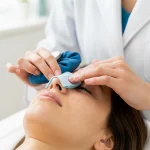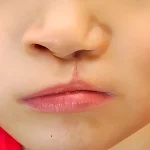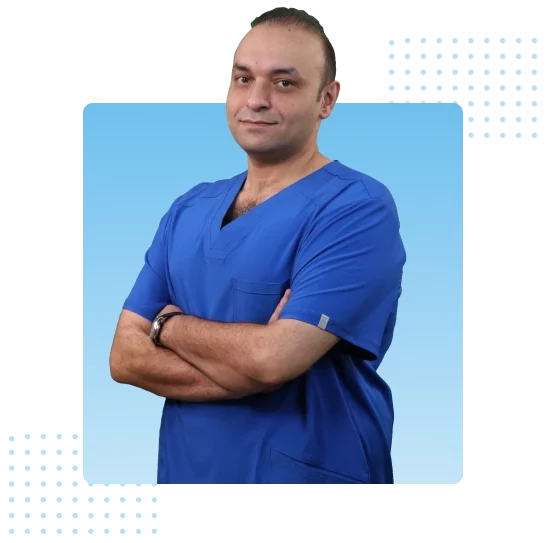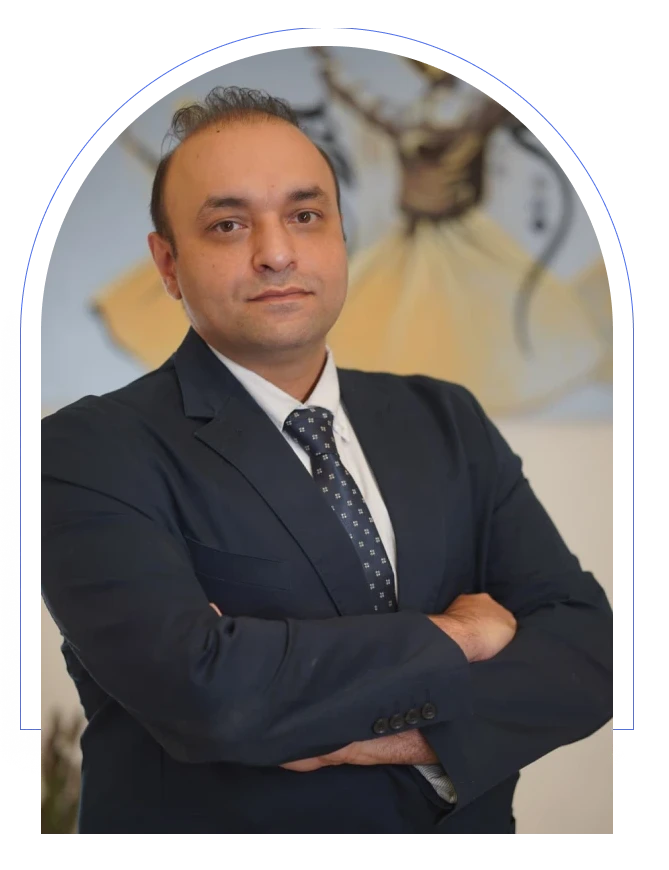For many people, the shape, size, or position of their ears can be a source of self-consciousness that lasts a lifetime. Whether it’s ears that stick out too far, are overly large, or are misshapen due to genetics or injury, the impact on self-esteem can be significant. If this sounds familiar, you may have wondered if there’s a solution, which leads to the question: What is Otoplasty?
Otoplasty, more commonly known as cosmetic ear surgery or ear reshaping, is a surgical procedure designed to change the appearance of the ears. It’s a highly effective and safe procedure that can correct a wide variety of aesthetic concerns. Unlike many other cosmetic surgeries, otoplasty is frequently performed on children as well as adults. The goal isn’t to create “perfect” ears, but rather to create a natural shape and position that brings a sense of balance and proportion to the face, ultimately boosting confidence and ending years of insecurity.
Otoplasty at a Glance
| Aspect | Description |
| What is it? | A surgical procedure to alter the size, position, or shape of the ears for improved aesthetic balance. |
| Primary Goals | To correct prominent (“sticking out”) ears, reduce the size of large ears, or reshape misshapen ears. |
| Common Corrections | Prominent ears, macrotia (overly large ears), underdeveloped ears, cauliflower ear (from injury), torn earlobes. |
| Anesthesia | Typically general anesthesia for young children; local anesthesia with sedation or general anesthesia for adults. |
| Procedure Time | Usually takes 1 to 3 hours, depending on the complexity of the surgery. |
| Recovery Time | Social downtime is about 1 week. A protective headband is worn at night for several weeks. |
| Age of Patients | Can be performed on children (usually after age 5-6), teenagers, and adults. |
| Results | Permanent and immediately visible once dressings are removed. |
What Can Otoplasty Correct? Types of Ear Reshaping Surgery
The ears are complex structures, composed of intricate folds of cartilage covered by skin. This structure begins developing before birth and continues to grow in the early years of life. If the ear’s cartilage (the pinna or auricle) doesn’t develop correctly, you might consider otoplasty to improve the size, position, or shape. There are several distinct types of otoplasty, each designed to address a specific issue.
۱. Ear Pinning (Otopexy): Correcting Prominent Ears
This is the most common reason people seek otoplasty. Ear pinning, or otopexy, is performed on individuals whose ears protrude significantly from the sides of their head. This condition occurs when the antihelical fold (the main fold in the center of the ear) is underdeveloped or when there is an excess of cartilage in the conchal bowl (the deepest part of the ear). The surgery aims to create a more defined antihelical fold and/or remove a small piece of conchal cartilage, allowing the ear to sit closer to the head in a more natural position. The result is a dramatic improvement in facial harmony and a significant reduction in the ears’ prominence.
۲. Ear Reduction: Reshaping Overly Large Ears (Macrotia)
Macrotia is the medical term for ears that are disproportionately large for the head, even if they do not stick out. This can make a person feel that their ears are overly conspicuous. Ear reduction surgery is a cosmetic procedure used to reshape and reduce the overall size of the ears. The surgeon carefully removes excess cartilage and skin, sculpting the ear into a smaller, more proportionate shape while preserving its natural-looking contours. This procedure can be performed on the entire ear or just on the earlobes if they are overly large or stretched.
۳. Ear Augmentation: For Underdeveloped or Small Ears
While less common, some individuals are born with ears that are very small, flat, or not fully formed, a condition known as microtia. In other cases, an injury may have resulted in a loss of tissue. Ear augmentation is a type of otoplasty that can address these concerns. The goal is to build up the ear’s structure to a more normal size and shape. This is often a more complex reconstructive procedure that may involve using cartilage grafts from the patient’s own rib cage or, in some cases, using a synthetic medical implant to create a new framework for the ear.
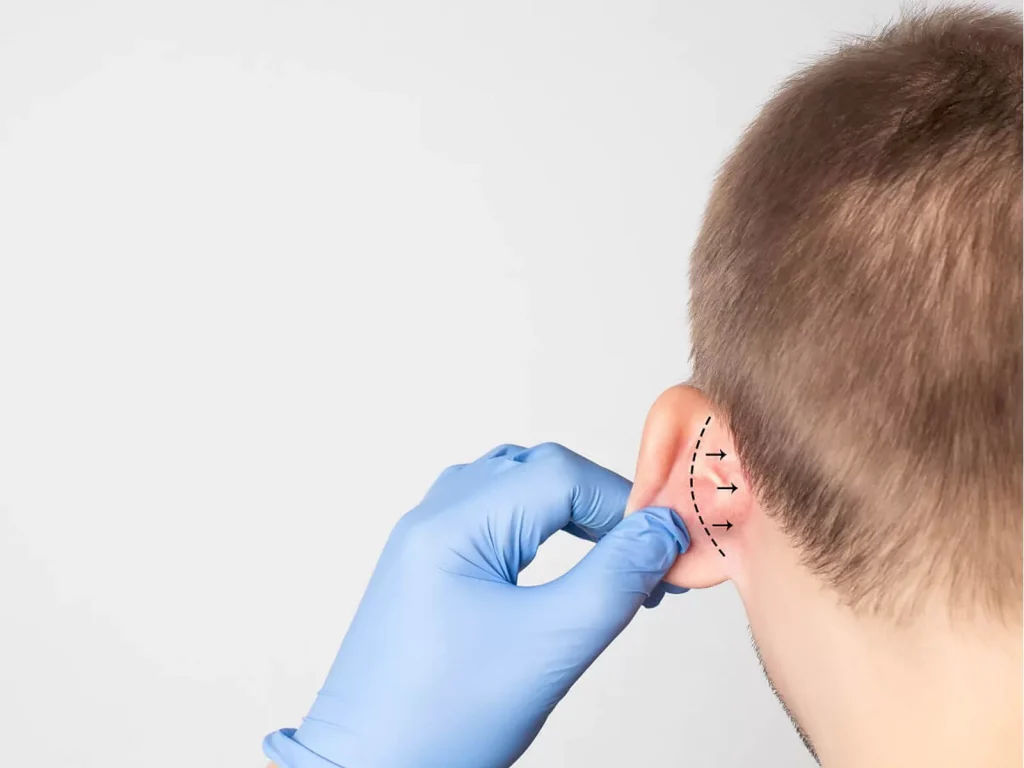
How is Otoplasty Performed? The Surgical Process Explained
The specific techniques used during otoplasty will vary depending on the type of correction needed, but the general process follows a clear set of steps.
- Anesthesia: The procedure begins with the administration of anesthesia to ensure the patient is comfortable and feels no pain. For young children, general anesthesia is almost always used. For older children, teens, and adults, the surgery can often be performed with local anesthesia combined with a sedative.
- The Incision: The surgeon makes a small, discreet incision. For ear pinning and reduction surgeries, this incision is typically made in the natural crease on the back of the ear, where it joins the head. This strategic placement ensures that the resulting scar is well-hidden and not easily visible.
- Reshaping the Cartilage: Once the incision is made, the surgeon can access the ear’s underlying cartilage. Depending on the goal of the surgery, the surgeon might remove excess cartilage, score it to make it more flexible, or use permanent internal sutures to fold the cartilage into a new, more desirable shape. These sutures hold the cartilage in place and are not removed.
- Closing the Incision: After the reshaping is complete, the surgeon closes the incision with external stitches. These may be dissolvable or may need to be removed about a week after the surgery.
- Dressing and Recovery: A soft, protective dressing or bandage is wrapped around the head to support the ears, minimize swelling, and protect the incisions as they heal.
Who is an Ideal Candidate for Otoplasty?
Otoplasty can be a life-changing procedure for the right person. Good candidates, whether children or adults, typically share a few key characteristics:
- Children and Teenagers: The procedure is often performed on children between the ages of 5 and 14. By age 5 or 6, a child’s ears have reached about 90% of their adult size, making surgery a safe option. Ideal young candidates are in good health, are cooperative and able to follow instructions, and ideally, have expressed their own desire for the surgery.
- Adults: Adults of any age who are in good general health and are bothered by the appearance of their ears can be excellent candidates. It is important for adult candidates to be non-smokers (or willing to quit), as smoking can significantly impair the healing process.
- Realistic Expectations: For any age group, having a clear and realistic understanding of what the surgery can achieve is crucial. The goal is improvement, not perfection.
- Specific Concerns: Candidates are typically looking to correct prominent ears, reduce the size of large ears, or address dissatisfaction with the shape of their ears.
Preparing for Your Otoplasty Procedure
Proper preparation is essential for a safe and smooth surgical experience. Your surgeon will provide you with a detailed list of instructions, which will likely include:
- Medical Evaluation: You will need to undergo a medical evaluation to ensure you are fit for surgery.
- Medication Review: You must stop taking certain medications and supplements that can increase bleeding, such as aspirin, ibuprofen, anti-inflammatory drugs, and some herbal supplements, for about two weeks before your surgery.
- Stop Smoking: If you are a smoker, you will need to stop for several weeks before and after the surgery to ensure proper healing and reduce the risk of complications.
- Arrange for Support: Plan for someone to drive you home after the procedure and to stay with you for at least the first night, especially if general anesthesia is used.
The Otoplasty Recovery Journey: Aftercare and Healing

Following your post-operative instructions is vital for a successful outcome. The initial recovery is relatively quick, but complete healing takes time.
- The First Week: You will wear a bulky dressing for the first few days. After this is removed, you will need to wear a lighter, headband-style dressing, especially at night, for several weeks. This protects the ears from being bumped or bent while you sleep. Some discomfort, itching, and numbness are normal.
- Activity: You should plan to rest for the first few days. Most adults can return to work within a week. Children can typically return to school after about a week but should avoid playground activities or contact sports for several weeks.
- Pain Management: Any pain or discomfort is usually mild and can be managed effectively with pain medication prescribed by your surgeon.
- Final Results: While you will see a noticeable difference as soon as the initial dressings are removed, it can take a few months for all residual swelling to subside and for the final shape and position of your ears to settle.
Understanding the Potential Risks of Otoplasty
Otoplasty is a very safe procedure with a high satisfaction rate, but like any surgery, it carries some potential risks. These are uncommon but can include:
- Scarring: While scars are well-hidden, there is a risk of them becoming thick or raised (keloid scars).
- Asymmetry: Minor differences between the ears are normal, but in rare cases, surgery may result in noticeable asymmetry.
- Changes in Skin Sensation: Temporary numbness or changes in sensation in the ear skin are common but usually resolve over time.
- Infection: Infection of the cartilage or skin is a rare but serious risk.
- Overcorrection: An unnatural “pinned back” look can occur if the ears are positioned too close to the head.
Choosing a board-certified, experienced surgeon significantly minimizes these risks.
Choosing the Right Surgeon for Your Otoplasty
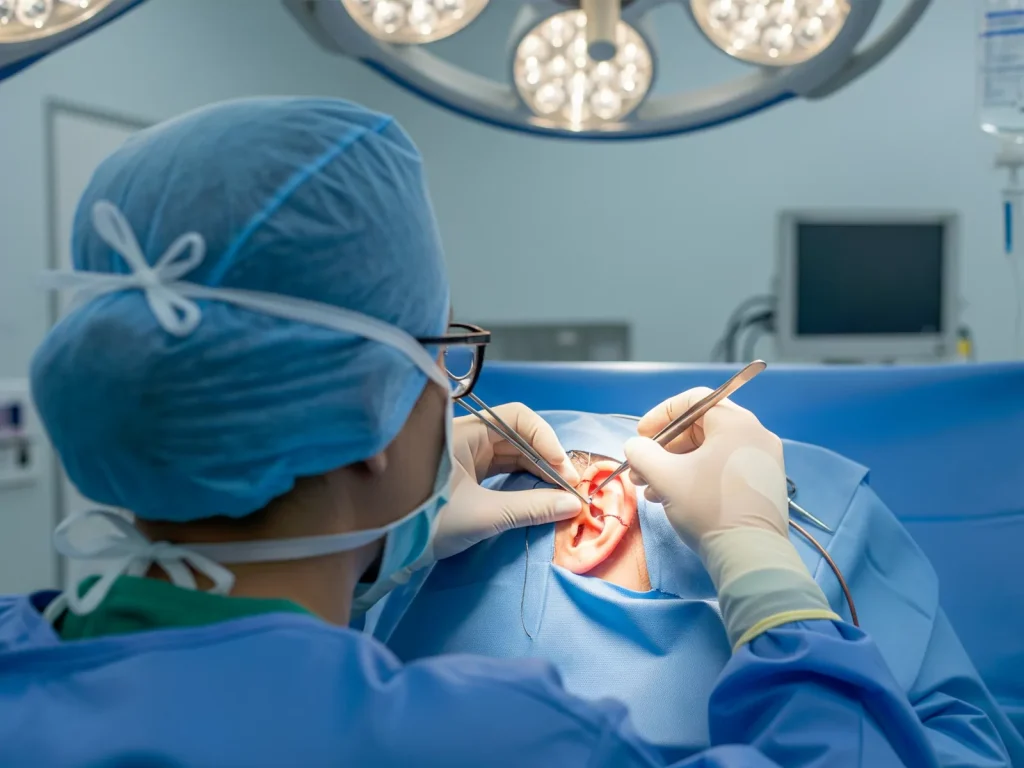
Your surgical outcome is directly linked to the skill and experience of your surgeon. It is crucial to select a board-certified plastic surgeon or ENT specialist with a deep understanding of facial anatomy and extensive experience performing otoplasty on both children and adults.
For those considering otoplasty in Iran, we highly recommend a consultation with Dr. Armin Akbari. As a leading ENT specialist and cosmetic surgeon, Dr. Akbari is renowned for his meticulous technique and his ability to create beautifully natural and proportionate results.
Dr. Akbari’s distinguished credentials confirm his expertise:
- Board-Certified from Tehran University: A mark of his elite training and qualification.
- Member of the Iranian Society of Rhinoplasty and Facial Plastic Surgeons: Demonstrating his commitment to the highest standards of care.
- A Record of Over 10,000 Successful Surgeries: Reflecting his vast surgical experience and the trust he has cultivated with his patients.
To start your journey towards enhanced confidence, we invite you to connect with an expert. Please fill out the contact form below to get in touch with Dr. Armin Akbari and his team. We will contact you promptly to schedule your consultation.
Frequently Asked Questions About Otoplasty
No. Otoplasty only alters the external ear (the auricle). It does not involve the inner or middle ear structures that are responsible for hearing, so your hearing will not be affected.
When performed purely for cosmetic reasons, otoplasty is not covered by insurance. However, in rare cases where the ear deformity is causing functional issues or is the result of a traumatic injury, some coverage may be possible.
The results of otoplasty are considered permanent. The cartilage is reshaped and secured in its new position, providing a lasting correction.
After an initial period of numbness, sensation will gradually return to your ears. They may feel slightly stiff initially, but this will soften over time.
Yes, it is common for adults to combine otoplasty with other facial procedures such as rhinoplasty or a facelift to achieve more comprehensive facial rejuvenation.
